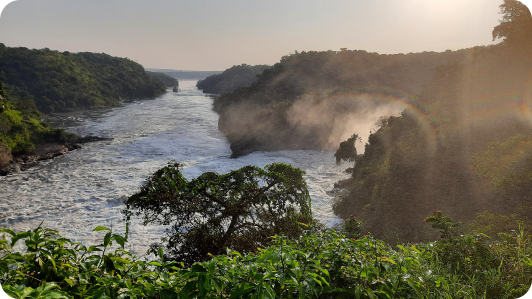Luo Ethnic Groups of East Africa
Our elders, along with stories passed down through generations and insights from many scholars, believe that the Nilotic-speaking peoples, including the Luo, likely migrated from the Nile Valley regions (modern-day Sudan and southern Egypt) into East Africa over several centuries. These migrations were complex, unfolding over many years.
As Luo people spread across East Africa, we share a common linguistic and cultural heritage rooted in our Nilotic origins. While each of our sub-groups has its own distinct customs, we remain united by a shared identity. Our rich heritage continues to shape our roles in the cultural and political landscapes of the countries we call home. Despite the challenges we’ve faced over time, our strong sense of community, resilience, and pride in our history ensure we continue to shape our future.




We are a diverse group of Nilotic communities, with our homeland stretching from Egypt and Sudan to South Sudan, Ethiopia, northern Uganda, western Kenya, eastern Congo, and the Mara region of Tanzania. Our language, Dholuo, is spoken by the Joluo in Kenya and Tanzania, and it includes more Bantu loanwords than other Luo dialects. Historically, our communities have been separated for around eight centuries.
Despite migration, colonialism, and conflict, our cultural identity has remained strong. We’ve adapted to modern challenges, preserving our traditions and maintaining strong communal bonds, spiritual practices, and vibrant arts.
Our migration paths are recorded in our rich oral histories, and today, we continue to have a significant presence across East Africa.
Luo Sub-Groups Across East Africa
As the Luo people, we are spread across several countries in East Africa. Within these regions, there are various sub-groups, each with its own distinct identity. While we all share common linguistic and cultural traits, each sub-group maintains unique customs and practices that set us apart.
Luo Sub-Groups Across East Africa
Jaluo (Kenya)
The Jaluo are the largest and best-known Luo group, primarily based in Kenya’s Nyanza region, particularly around Kisumu and Lake Victoria. We are central to Luo identity in Kenya, and our culture plays a significant role in broader Kenyan society.
Acholi (Uganda and South Sudan)
We, the Acholi, are found in northern Uganda and parts of South Sudan. Our language, Luo Acholi, is a variety of Dholuo. Traditionally, we are agriculturalists and cattle herders, known for our rich cultural heritage and strong community ties.
Lango (Uganda)
The Lango are a Luo-speaking group from northern Uganda. While we share ties with the Acholi and other Luo groups, we maintain our distinct customs and practices that make us unique within the wider Luo family.
Alur (Uganda and DRC)
The Alur live in the western parts of Uganda and northeastern regions of the Democratic Republic of Congo (DRC), particularly around Lake Albert. We speak Luo Alur and are traditionally known for our fishing and farming practices, which form the backbone of our livelihoods.
Anyuak (South Sudan and Ethiopia)
The Anyuak are primarily found in the Gambella region of western Ethiopia and the Upper Nile region of South Sudan. We speak a Luo language similar to Dholuo and live mainly by farming and fishing, with a deep connection to the land and river systems.
Shilluk (South Sudan)
The Shilluk people live along the White Nile in South Sudan. While we speak a different language, we share many cultural traits with the Luo. Our community has a rich royal history, and we maintain a significant kingship system that is central to our identity.
Bwamba (Uganda and DRC)
The Bwamba are a smaller Luo-related group found in the border regions between Uganda and the DRC. We speak a Luo dialect and are traditionally farmers, continuing to rely on agriculture for our sustenance and cultural practices.
Luo Sub-Groups Across East Africa
Across all these sub-groups, we share a deep sense of belonging and pride in our Luo heritage, while also celebrating the unique identities that each of us brings to the larger Luo community.